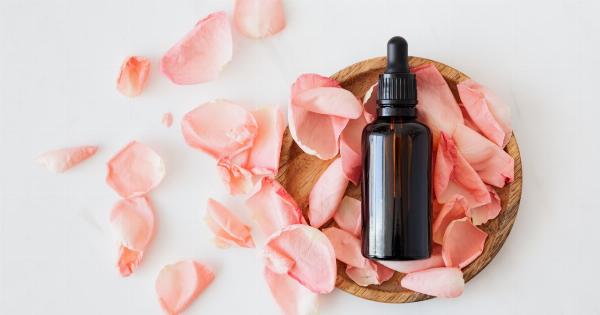Hair loss is a common issue that affects women of all ages and can have a significant impact on their self-esteem and overall well-being.
Whether caused by genetics, hormonal changes, or certain medical conditions, dealing with hair loss can be challenging. However, with the right tips and strategies, women can effectively manage and combat hair loss, promoting hair growth and regaining their confidence. In this article, we will explore various methods and techniques to deal with hair loss in women.
Understanding the Causes of Hair Loss in Women
Before delving into the tips and strategies for dealing with hair loss, it is important to have a basic understanding of the common causes. By identifying the cause, women can adopt a more targeted approach to combat hair loss.
Hormonal imbalances: Hormonal changes, particularly during pregnancy, menopause, and conditions like polycystic ovary syndrome (PCOS), can contribute to hair loss in women.
These imbalances disrupt the hair growth cycle and result in excessive shedding.
Genetics: Just like men, women can also experience hereditary hair loss, commonly known as female pattern baldness.
This type of hair loss is often characterized by a gradual thinning of the hair and can start as early as the teenage years.
Medical conditions: Certain medical conditions such as thyroid disorders, autoimmune diseases, and scalp infections can cause hair loss in women.
It is important to identify and treat these underlying conditions to promote hair regrowth.
Stress and lifestyle factors: High levels of stress, poor nutrition, crash diets, and excessive styling or heat treatments can all contribute to hair loss in women.
These factors can weaken the hair follicles and lead to breakage and thinning.
Tips for Dealing with Hair Loss in Women
1. Consult a healthcare professional
If you notice significant and persistent hair loss, it is advisable to consult a healthcare professional specializing in hair and scalp disorders.
They will be able to assess your condition, identify any underlying causes, and recommend appropriate treatments or lifestyle changes.
2. Practice a healthy lifestyle
Eating a balanced diet, exercising regularly, and getting enough sleep are crucial for maintaining overall health, including the health of your hair.
A nutrient-rich diet that includes proteins, vitamins, minerals, and healthy fats can promote hair growth and reduce hair loss.
3. Avoid excessive heat and styling
Excessive use of heat styling tools, such as hair straighteners and curling irons, can damage the hair shafts and lead to breakage. It is important to minimize the use of these tools and apply a heat protectant spray before styling.
Additionally, avoid tightly pulling back your hair in hairstyles that cause tension on the hairline.
4. Be gentle while brushing and washing
When dealing with hair loss, it is important to be gentle while brushing and washing your hair. Use a wide-toothed comb or a brush with soft bristles to avoid further damage.
Avoid vigorous towel-drying and instead, gently pat your hair dry or let it air dry.
5. Consider topical treatments
There are various topical treatments available that can help stimulate hair growth in women. One popular option is minoxidil, which is an over-the-counter medication that can be applied directly to the scalp.
It is important to follow the instructions and be patient, as it may take several months to see results.
6. Explore natural remedies
Some natural remedies, such as essential oils, can help support hair growth. Rosemary oil, lavender oil, and peppermint oil are believed to have properties that promote hair growth.
These oils can be mixed with a carrier oil, such as coconut oil, and gently massaged into the scalp.
7. Consider hair loss camouflage techniques
While waiting for hair regrowth, women can explore various hair loss camouflage techniques to enhance their appearance. These techniques include using hair fibers, volumizing sprays, and hair extensions to create the illusion of fuller hair.
8. Opt for hairstyles that add volume
Choosing the right hairstyle can make a significant difference in camouflaging hair loss. Shorter haircuts, layers, and styles with added volume can create the appearance of thicker hair.
Consulting with a professional hairstylist can help you find the most flattering haircut for your hair type.
9. Protect your hair from the sun
Exposure to the sun can weaken the hair and lead to further damage. It is important to protect your hair from harmful UV rays by wearing a hat or using hair products that contain UV filters.
Additionally, avoid spending prolonged periods in chlorinated water, such as swimming pools, as chlorine can also damage the hair.
10. Seek emotional support
Dealing with hair loss can be emotionally challenging, and it is important to seek support from loved ones or join support groups with individuals facing similar experiences.
Remember that you are not alone, and talking to others who understand can provide valuable emotional support.
Conclusion
Hair loss can be distressing for women, but with the right tips and strategies, it is possible to manage and combat this issue.
By identifying the underlying causes, consulting healthcare professionals, taking care of overall health, and exploring various treatment options, women can promote hair regrowth and regain their confidence. Remember, each individual’s hair loss journey is unique, and it may require patience and perseverance to find the most effective solutions. Stay positive and proactive in your approach, and embrace your beauty, regardless of hair volume.












